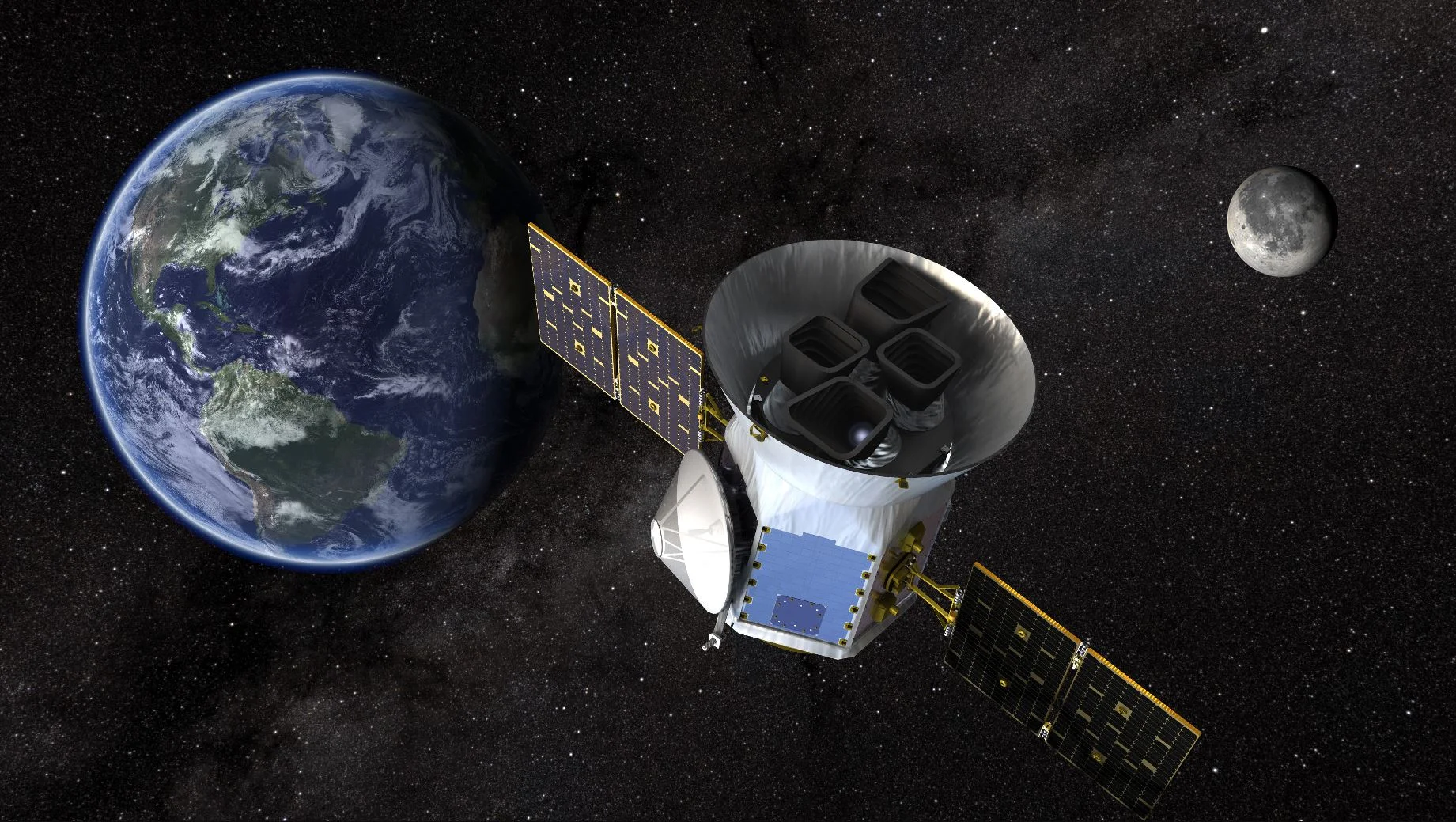Any comments, suggestions or just looking for a chat about this subject? Don't hesitate and leave a comment on our improved comment section down below the article!
By Evan Gough
Image Credit: NASA’s Goddard Space Flight Center
How many exoplanets are there? Not that long ago, we didn’t know if there were any. Then we detected a few around pulsars. Then the Kepler spacecraft was launched and it discovered a couple thousand more. Now NASA’s TESS (Transiting Exoplanet Survey Satellite) is operational, and a new study predicts its findings.
The Kepler findings gave us a better idea of the types and numbers of planets in other solar systems. But Kepler had its limitations and its own sampling bias due to its measurement methods. Kepler also only focused on one small area of the sky, comprising about 0.25% of the sky. It’s possible, but not necessarily likely, that the small part of the sky Kepler focused on is not representative of a larger sample.
TESS is much different than Kepler, especially in the area of the sky it covers. It will perform an all-sky survey, rather than a survey focused on a small portion of the sky. NASA’s new planet-hunter will also focus on the brightest stars. That’s because its primary science objective is to find planets larger than Neptune that are orbiting bright stars. The stars need to be bright so that follow-up spectroscopic observations can determine planet masses and atmospheric compositions.
Even though we don’t have a consensus on how common exoplanets are in terms of their size and orbital periods, Kepler showed us that exoplanets are common. Most stars have them. But many of the exoplanets that Kepler found are extremely distant, from hundreds to thousands of parsecs away. So detailed follow-up observations are difficult to impossible. Since Tess is focusing on closer, brighter stars closer to Earth, making follow-up observations with other ‘scopes easier, its results should be more representative and more accurate in determining exoplanet populations.
So, What Can We Expect From TESS?
A new study from Thomas Barclay, NASA Goddard Space Flight Center, Joshua Pepper, University of Maryland, and Elisa Quintana, Lehigh University, has predicted TESS’s results. Their paper was published in The Astrophysical Journal. The three researchers used what we know about the stellar population and what we know about exoplanet populations, combined with TESS’s observation modes, to come up with their estimates.
There are three factors in their simulation:
A simulation of the stellar population that TESS will observe.
A representative sample of planets orbiting those stars.
A prediction of how many of those planets TESS will detect.
Their estimates are called a “yield simulation” and it’s not the first one that astronomers have come up with. But before we get to the numbers, a question: Why do we need to know beforehand what TESS will find?
This is TESS’s First Light image. On the left is the star R Doradus, and on the right is the Large Magellanic Cloud. -Image Credit: By NASA/MIT/TESS
The answer to that is to get a head-start on what a follow-up observation program might look like. Astronomers like to plan ahead, since observing resources are so dear. They don’t want to wait until all the results from TESS are in before they think about the next steps. Or maybe they’re just excited like kids in a candy story. A bit of both, probably.
The Yield Simulation: 14,000 exoplanets and 10 that could be Earth-like
Barclay, Pepper, and Quintana ran their simulation 300 times to come up with their predicted yield. There’s a lot of detail in their results related to the type of star the planets orbit, the different observation mode used to detect which planets, and how it all relates to follow-up observations. But in a more brief form, here’s what the three researchers think TESS will find during its planned two-year mission:
14,000 total exoplanets
2100 of them will be smaller than 4 Earth radius (4R), 280 of those smaller than 2R
70 habitable planets orbiting red dwarf stars, 9 of them smaller than 2R
10 Earth-like worlds less than 2R which could be in the habitable zone of a star like our Sun
That’s a pretty exciting haul. 14,000 exoplanets, of which 10 could be Earth-like worlds in the habitable zone of a star like the Sun. It doesn’t mean that’s what TESS will find, but it should be a good approximation, and an intriguing one. Especially since, unlike Kepler, TESS’s exoplanets are prime targets for further observation and characterization.
Most exoplanets orbit red dwarf stars because they’re the most plentiful stars. This is an artist’s illustration of what the TRAPPIST-1 system might look like from a vantage point near planet TRAPPIST-1f (at right) - Image Credits: NASA/JPL-Caltech
This isn’t the first yield simulation for TESS. But this one is done with real rather than simulated stellar population, so it should be more accurate. Another yield simulation from 2015 can be viewed here, and one from 2017 here.
The simulation yields show us that we’re likely to find Earth-like planets in habitable zones. Most of them will be orbiting red dwarfs, but a small number should be around Sun-like stars. This is what everybody wants to know.
But maybe more importantly, these simulations show us that TESS will meet its mission goal: to detect an abundance of planets smaller than Neptune that can be examined in follow up studies to determine their masses and atmospheric makeups.
In both cases, TESS is on track to deliver some solid results.
Originally published on Universe Today
Sources:
Research Paper: A Revised Exoplanet Yield from the Transiting Exoplanet Survey Satellite (TESS)
Research Paper: THE TRANSITING EXOPLANET SURVEY SATELLITE: SIMULATIONS OF PLANET DETECTIONS AND ASTROPHYSICAL FALSE POSITIVES
Research Paper: Planet Detection Simulations for Several Possible TESS Extended Missions
Wikipedia Entry: TESS
If you enjoy our selection of content please consider following Universal-Sci on social media:











